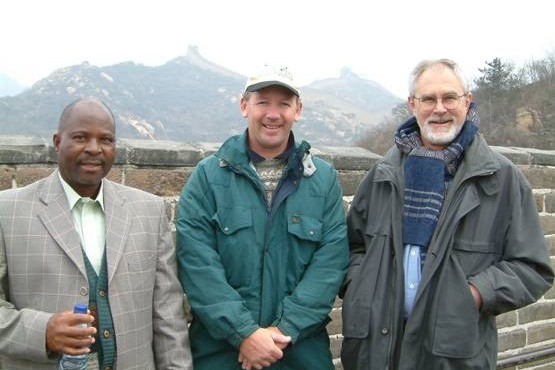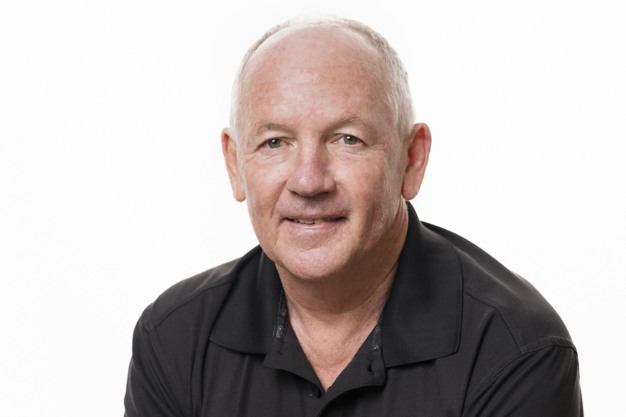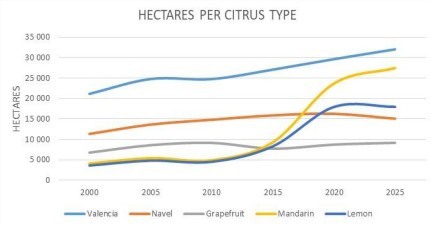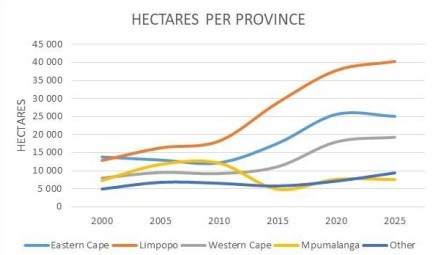It is not uncommon for people to work in the fresh produce industry for most of their careers, and this is the case for a well-known figure in the South African citrus industry. Justin Chadwick has been CEO of the Citrus Growers Association for 25 years, and at the end of March, he will retire from the role.
When Justin started at the CGA, the country had just come out of regulation, and all of the different Boards had been done away with. There was no structure in the citrus industry; it really was a baptism of fire. At that time, Justin was the sole employee of the association. These days, the CGA consists of a group of subsidiaries, including cultivar, development and research companies, and the Citrus Academy. It now employs hundreds of people.
Justin came from the sugar industry, which was very structured, so he was able to bring this to the citrus industry and serve the growers well. "In the beginning, it was just me and the growers, some of whom were open to the changes that were happening and some who were less keen and hankered for the old ways. The industry was very fragmented; there were the growers in the north, growers in the south, the orange growers, the lemon growers, the grapefruit growers, and everyone had their agenda," explains Justin.
Now, the board of the CGA looks after the interests of all the growers. There are also various focus groups for the different types of citrus, and each region can have a representative in the group.
The CGA has always included Zimbabwe and Eswatini and now includes Botswana, Mozambique, and Namibia.
 © CGA ZA
© CGA ZA
Justin in 2000 with Dr Attie Swart and grower Samson Qomondi on the Great Wall of China when opening China market. Attie and Samson have both sadly passed away.
Challenges
Justin has had to deal with his fair share of issues over the years. One of the biggest challenges has been Citrus Black Spot and, more recently False Codling Moth and the changing regulations to get into Europe and protests from the domestic European citrus sector. Others include protectionism, logistics: ports, road, rail, shipping and high tariffs in Asia.
"The South African industry has invested 180 million Rand on research per annum, most of it going into disease management, namely for CBS. We have also worked hard to prove that citrus fruit is not a pathway for the pest. The fact that we have managed to retain market access in Europe is down to our government and constant dialogue with the EU. I would have hoped to have seen a conclusion to this before I left, but the case is now with the WTO and hopefully will be closed soon.
"Two years ago, we had the issue of the False Codling Moth just as the season was starting, giving us little time to put systems in place. This was just spiteful and there was very little engagement about this.
"These disputes do not include the whole Spanish industry, of course. We are the number one and two citrus producers in the world; we operate in counter seasons and should be working together. We are growers too and don't want to send pests to Spain; it is in no one's interest if there is a gap in supply and consumers start buying other fruits instead. Together, we play an important role, and we should be improving our relationship."
COVID-19
Although COVID-19 caused all sorts of problems around the world and many were forced to change the way they did business, it made for a bumper year for the South African citrus industry.
"We set up a COVID response committee; we were very proactive, addressing the risks before they happened, and we worked very closely with the government. This was unique, and we got through it quite well. 2020 was actually one of the best years for South African citrus, there was a huge surge in demand. The problems came in 2021 and 2022 which were some of the worst ever and almost brought us to our knees. The logistics chain was totally chocked, there was congestion everywhere and shipping costs doubled, sometimes quadrupled.
"In order to get on top of the sky-high shipping rates, we decided to get more involved with the shipping side of things and engaged a consultant to give us some options. We looked at buying or contracting vessels, then decided the best plan would be to bring more shipping companies into the mix. There had only been two shipping companies covering 80% of citrus exports, we brought in another one. Rates may have come down regardless, but they did come down.
"2021 and 2022 were the worst years for South African citrus, the industry was stripped of all the reserves."
 © CGA ZA
© CGA ZA
Achievements
Justin said that his biggest achievements have been market access, unity, and structure within the industry.
As well as being a major achievement, market access has also been one the biggest challenges over the years. Gaining market access to China was a very special one for him.
"It was a real game changer; China now takes 10% of our citrus. If this market had not opened, it would have created problems. We now also have access to Vietnam for oranges and the Philippines for all citrus. Our main aims are 'GRO': Gain, Retain, Optimise. It is not only about gaining access; it is also very important to retain these markets and to change and optimise the conditions of entry. One example of this is when China dropped the cold treatment requirement."
Citrus Academy
"The Citrus Academy started in-house with Jacomien de Klerk as General Manager back in 2005 before becoming one of the group's subsidiaries. We have put quite a few students through on bursaries. They attend a lot of the industry events, always wearing matching attire and cause quite a stir. They are very enthusiastic; we have a lot of issues in South Africa, and seeing their positivity gives me a lot of hope. We monitor our students after they leave the academy, and we see that 80% go into the agricultural field, with 50% of those staying within the citrus industry."
25 years of South African citrus
 © CGA ZA
© CGA ZA
In 2000 – navel and grapefruit hectares were both greater than lemons and mandarins, while the Eastern Cape was home to the most citrus hectares in southern Africa, and Mpumalanga was equal to the Western Cape. Since then, mandarin orchards have grown to cover an area seven times greater, and lemon orchards five times. Both Valencia and Navel orange orchards increased by a third, while grapefruit hectares have remained fairly static. The increase in lemon and mandarin hectares really took off between 2015 and 2020.
 © CGA ZA
© CGA ZA
Since 2000, Limpopo took over as the leading citrus province with growth in Senwes (Groblersdal/Marble Hall), Burgersfort/Ohrigstad, and Hoedspruit – increasing threefold. The Eastern Cape and Western Cape both increased twofold, while Mpumalanga remained static.
Source: CGA
End of an era
When you have been doing a tough job for 25 years, it can be difficult to stay motivated and enthusiastic, but not for Justin.
"I think it is down to the people. I have always worked with growers, as a lecturer at a college, in the sugar industry, and in the CGA. For me, it is important who I work with; they need to have good values and ethics, and I have always seen this with growers. They can be very demanding, and it's not all been plain sailing, but they are good people. Also, in this job, every day is different, which keeps it interesting; things are constantly changing, and there are always new challenges, but I have always had great people around me."
Justin will continue as CEO of CGA until the end of March and then will assist in introducing the incoming CEO, Dr Boitshoko Ntshabele, with introductions to various aspects of the job, key stakeholders, and grower members to the end of May 2025. He hopes to do some traveling in June. "I am looking to stay involved in the citrus industry, I think I can still add value to growers and the industry. One thing that really excites me is market access, and there is still huge potential for the South African citrus industry."
Justin Chadwick
justchad@cga.co.za
